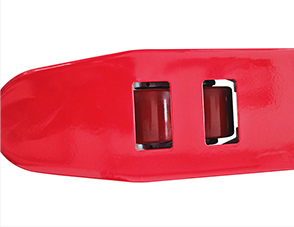


Understanding Rigging Chain Blocks An Essential Tool in Heavy Lifting
In the world of construction, manufacturing, and various industrial applications, heavy lifting is an integral aspect of operations. One of the essential tools utilized for safely lifting and moving heavy equipment and materials is the rigging chain block. Also known as a chain hoist, this equipment is designed to provide a straightforward, efficient, and reliable means to lift loads, making it indispensable in many settings.
The Anatomy of a Rigging Chain Block
A rigging chain block comprises several key components the chain, the hook, the gearbox, and the body. The chain, typically made from high-strength materials, is the primary means through which lifting power is transmitted. As the operator pulls on the hand chain, the motion is transferred through a system of gears, multiplying the force exerted and enabling the lifting of heavy loads with minimal effort.
The hooks are designed to securely grasp the load, providing stability during lifting operations. Many chain blocks incorporate safety features such as latches or tips to prevent accidental disengagement of the load. The body houses the internal mechanisms, and durable materials, often steel, ensure that the chain block can withstand significant wear and tear.
Applications of Rigging Chain Blocks
Rigging chain blocks are widely utilized across various industries. In construction, they aid in lifting steel beams, concrete blocks, and heavy machinery during the building process. In manufacturing, they assist in moving large components on assembly lines. The maritime industry also finds them invaluable, as they are used for hoisting large cargo on and off ships, ensuring both efficiency and safety.

The versatility of chain blocks is particularly noteworthy. They can be used in horizontal lifting applications, not just vertical ones. This adaptability allows operators to maneuver loads in tight spaces or around obstacles, which is a common requirement in many industrial environments.
Safety Considerations
While rigging chain blocks significantly aid in material handling, safety must always be a priority. Workers should be trained in proper lifting techniques and familiarized with the equipment's specifications. Overloading a chain block beyond its rated capacity is one of the leading causes of accidents. Therefore, it’s crucial to always adhere to the manufacturer's guidelines regarding weight limits.
Regular inspections and maintenance of rigging chain blocks are essential to ensure their safe operation. Every component, from the chain to the hooks and the gearbox, should be checked for wear, damage, and proper functionality. Operators must also be vigilant for any signs of wear, such as elongation of the chain or deformities in the hooks.
Conclusion
In summary, rigging chain blocks are critical components of any heavy lifting operation across various industries. Their design and functionality allow for efficient and safe lifting of substantial loads, making them indispensable in settings ranging from construction sites to manufacturing plants. However, with great utility comes the responsibility of ensuring safety and proper maintenance. By prioritizing training and safety protocols, operators can harness the full potential of rigging chain blocks while minimizing risks associated with heavy lifting operations. As industries continue to evolve and demand greater efficiency, the significance of these devices will undoubtedly grow, solidifying their role as a cornerstone in the world of rigging and material handling.



